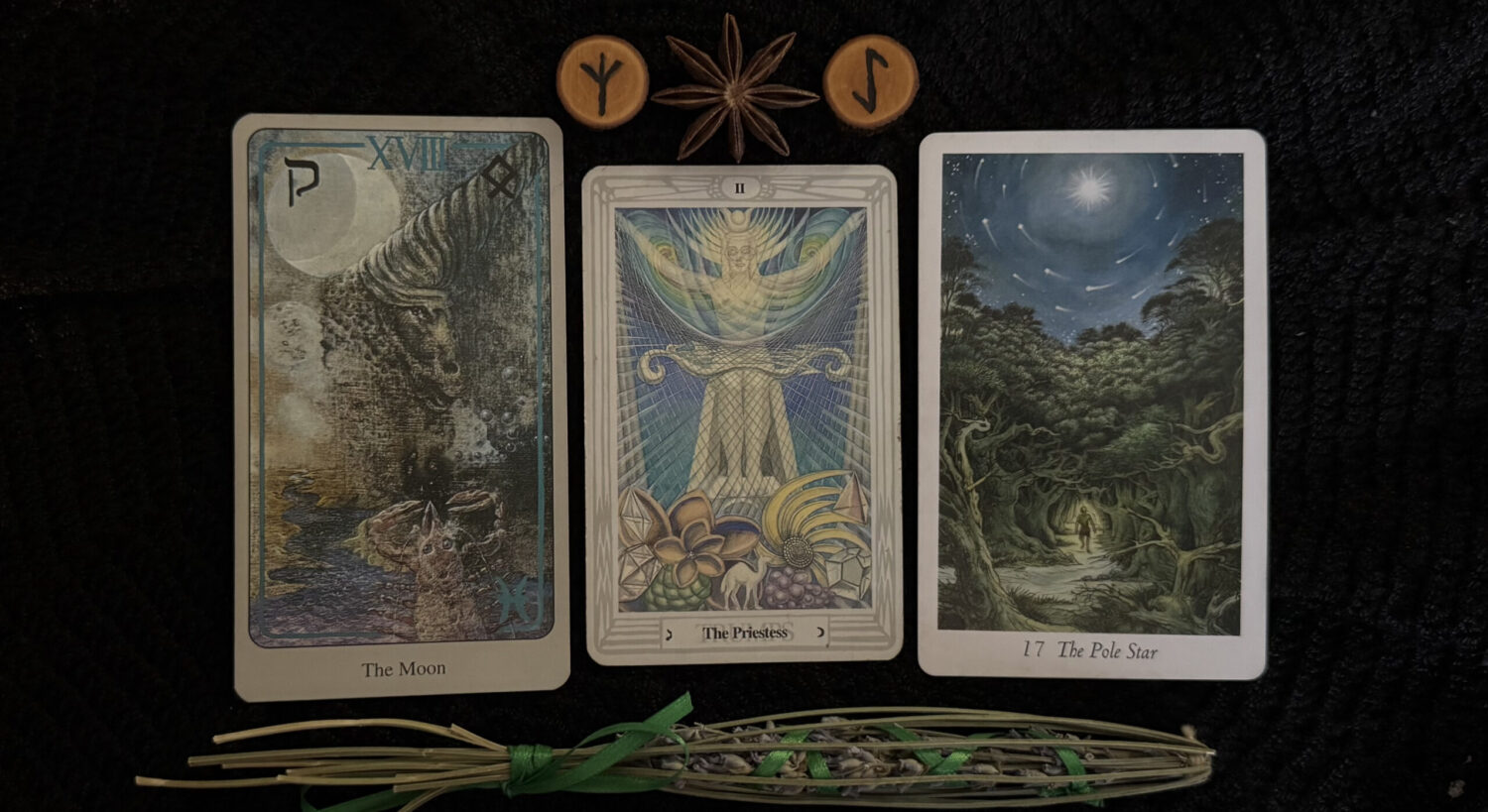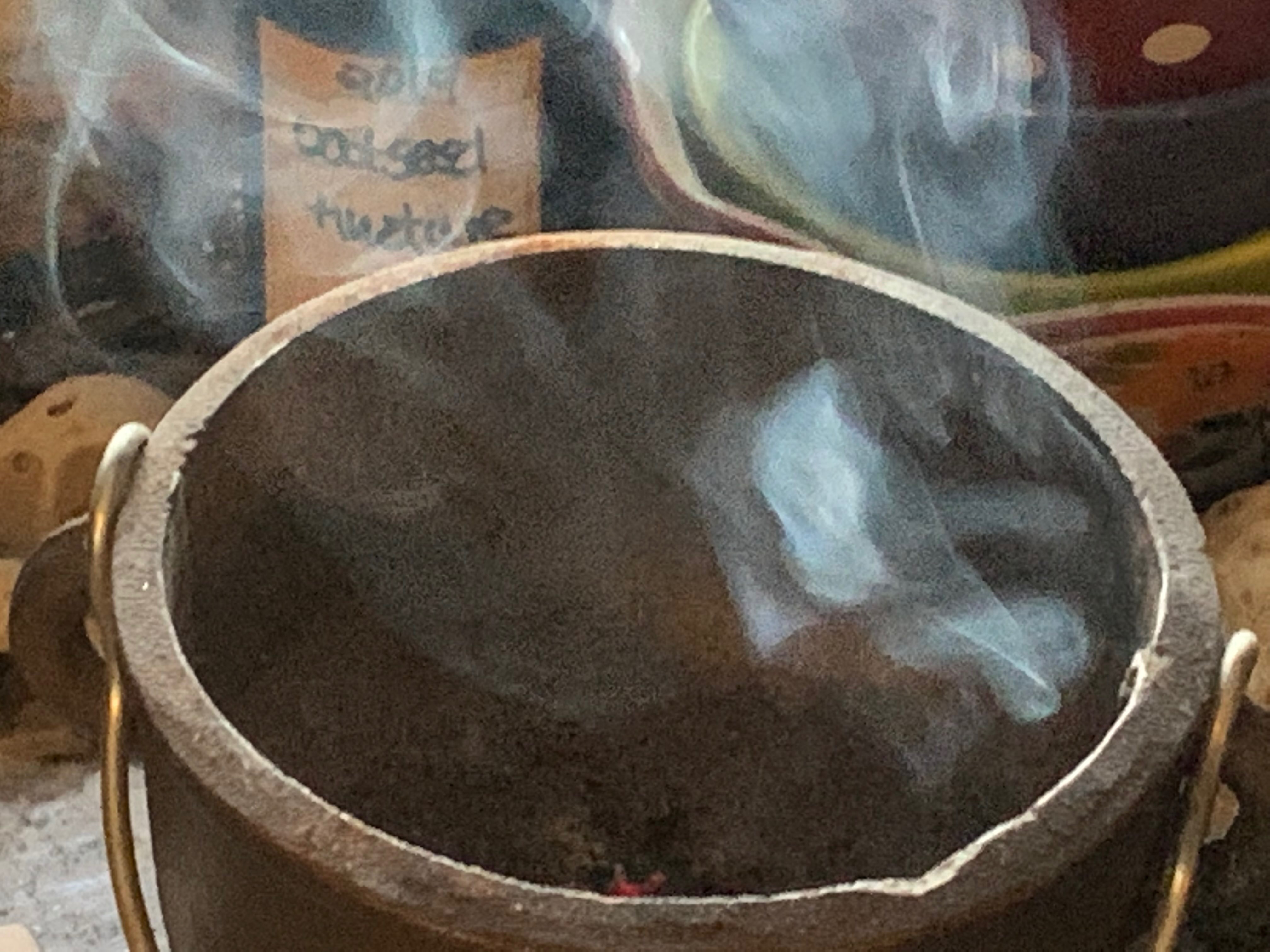Although we can buy incense just about anywhere, it’s more fun to make your own. I burn incense on ritual charcoal in a cauldron and I can use the cone-shaped variety, but inevitably it doesn’t burn all the way or something else happens and I have to pay far too much attention to the status of my incense to focus on anything else I’m doing.
And just so you know, as an Amazon associate, this post contains affiliate links that you’re welcome to click on for the ingredients I’m using in the event you need anything to make the incense.
[wordads]
So, a few years ago, I began making my own flat incense disks to burn in a cauldron. They seem to burn more evenly than the cone varieties and if I’m not using dried herbs, then I use my flat incense disks. I’m out of mugwort disks so I decided to make more. You’ll note that it’s not an exact science.

Ingredients
- sandalwood powder (I used Makko powder)
- powdered mugwort leaf
- powdered white sage leaf
- gum arabic (tragacanth is also used but I didn’t have any)
- water or herbal tincture (I used wormwood liniment)
Optional ingredients
- pinch of charcoal (optional, but I would have added it if I had found where I put it…I use willow charcoal my husband made for me)
- potassium nitrate (I’ve never added it because I burn them on ritual charcoal which already has it)
Ideally, you want to create a paste with your water and gum arabic or tragacanth if you have it. Both are bonding agents to help maintain whatever form you choose. A ratio of two-thirds dry to one-third liquid is a good place to start. I began with a teaspoon of gum arabic and used an eyedropper to add the liquid a few drops at a time to create a runny paste.
From there, I stirred in a half teaspoon of sandalwood powder because I like sandalwood and it helps coat the powdered mugwort which was pretty fluffy after I ground it in the coffee grinder. The slurry was becoming more paste-like after adding in the sandalwood powder.
[wordads]
I ground up some white sage leaf and stirred a teaspoon or so into the paste. Next, I began adding powdered mugwort in pinches using approximately a heaping tablespoon but who would really know given how fluffy it was. But I wanted the mugwort to be the primary herb in the incense, so I used more of that than sage.
I added some more liquid because it was a little too dry at this point as well as a quarter teaspoon of gum arabic for additional bonding. But really, this is about texture and all you need to do is make it doughy enough to hold together.
[wordads]
All of my silicone mats were in use so I used a bamboo cutting board to press out my incense disks. You can get fancy about it but I don’t see the point since they’re going to burn up anyway. I spooned out a small amount of incense mixture and flatten each one out a bit. I don’t want it too thick or it won’t dry as quickly.
I placed the incense disks in the stillroom to dry and after a couple of days, they were doing well enough to scrape off the cutting board. I used a razor blade because the incense had really stuck to the board. That’s why using a silicone mat is preferable. The disks peel right off of those.

I use ritual charcoal in a cauldron to burn the herbal incense disks. Typically, it helps to hold the charcoal with a pair of tongs and light it that way, but a long candle lighter works as well. Ritual charcoal can be found wherever church supplies are sold and it’s available here on Amazon.
After a few minutes, the charcoal ashes up and it’s time to add the incense disk. I placed it in the center of the ritual charcoal and watched as it began smoking.

Mugwort and sage are used in achieving the trance state in hedge riding, a shamanic practice similar to astral travel or shamanic journeying. Burning incense either in a cauldron or in a more conventional manner assists the witch on the path into the astral realm. Additionally, mugwort can be used in creating smudge sticks, either alone or with other herbs such as sage and lavender.
[wordads]
To encourage lucid dreaming, dried mugwort can be stuffed into a small dream pillow placed near the head or a sprig hung by the bedside. For those who don’t seem to remember their dreams, a mugwort dream pillow may prove useful.
So, if you’ve never made your own herbal incense, the above recipe, albeit in estimate form, should help. It’s not complicated and as you work with the texture and consistency you may be tempted to create shaped incense instead of the little splats of incense that I created. You’re only limited by your imagination, which clearly, I have none.
Until next time…
Blessings to all!
One last thing… you’re welcome to click on any links that may appear above…As an Amazon Associate, I earn from qualifying purchases. Thanks!
If anyone intends to either quote something I've written, or intends to post any part of my work, including my videos, on any other site, please ask permission before doing so. Any reposting of my work without permission can be considered as copyright infringement, so please ask. And if I give permission, you MUST clearly reference my name as author and my website. No exceptions. The words an author writes are sacred. Unapproved use is not.
Thank you... Jan Erickson

